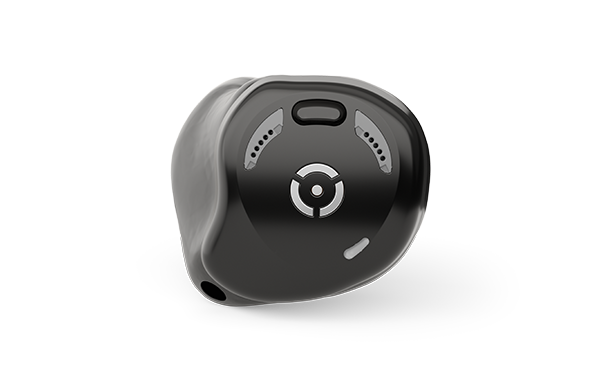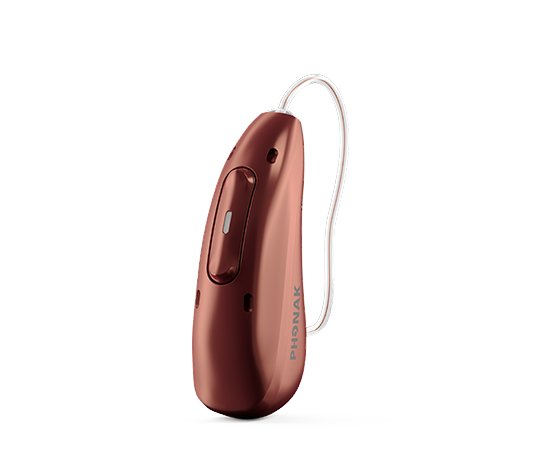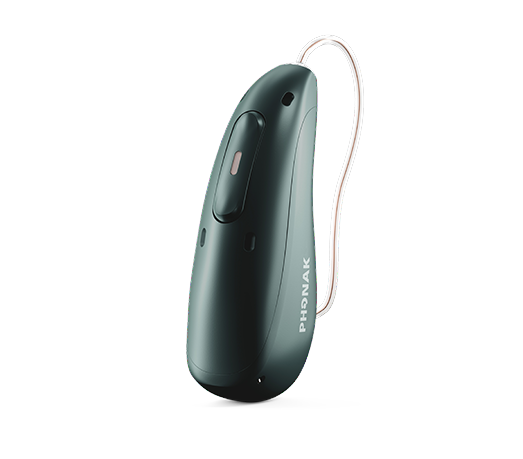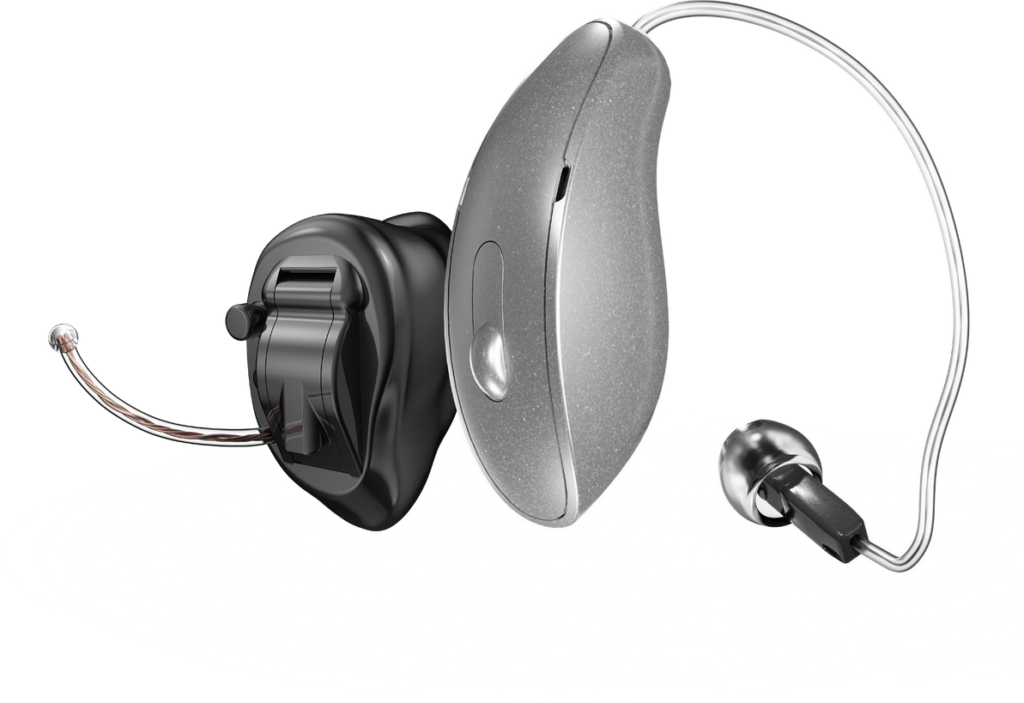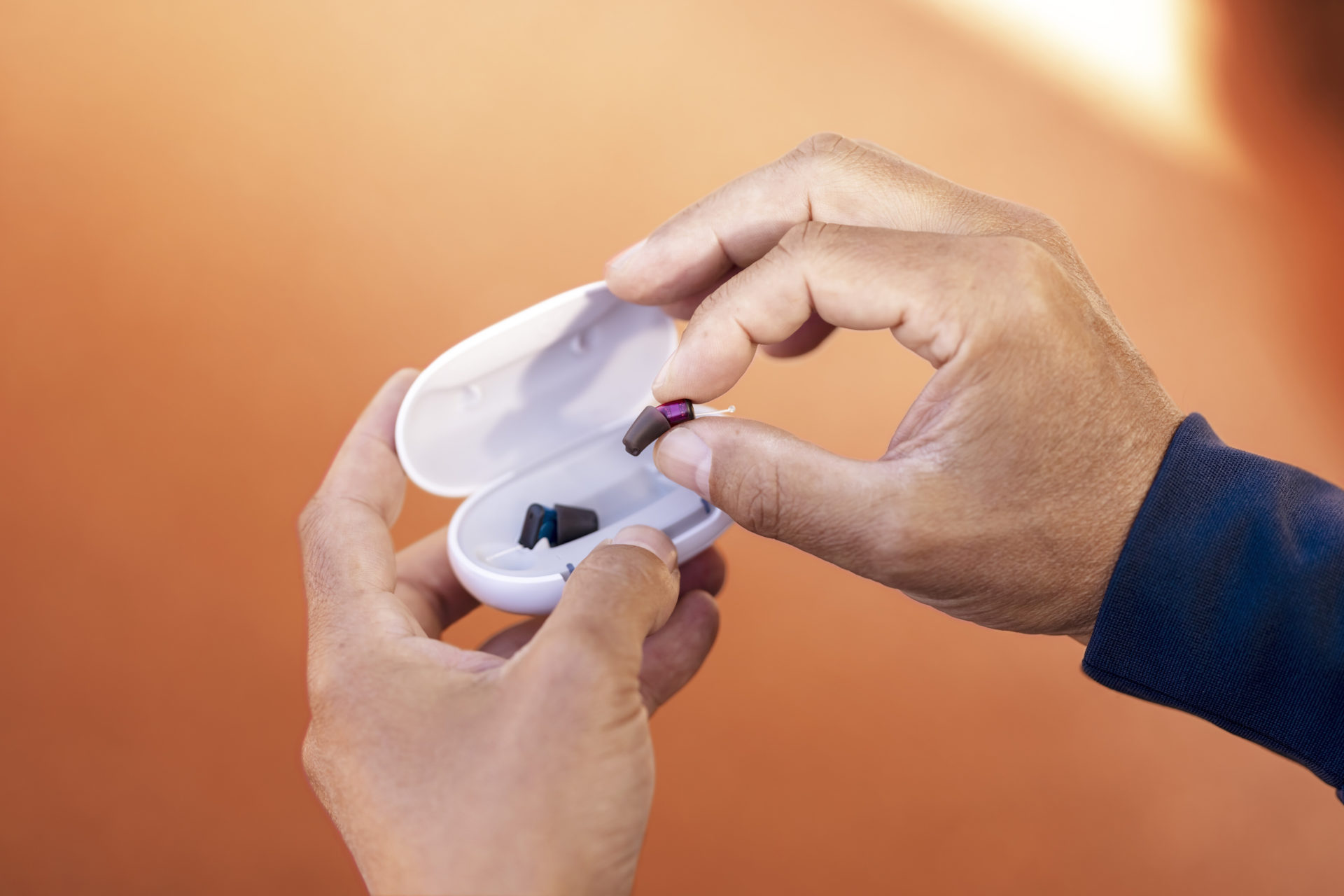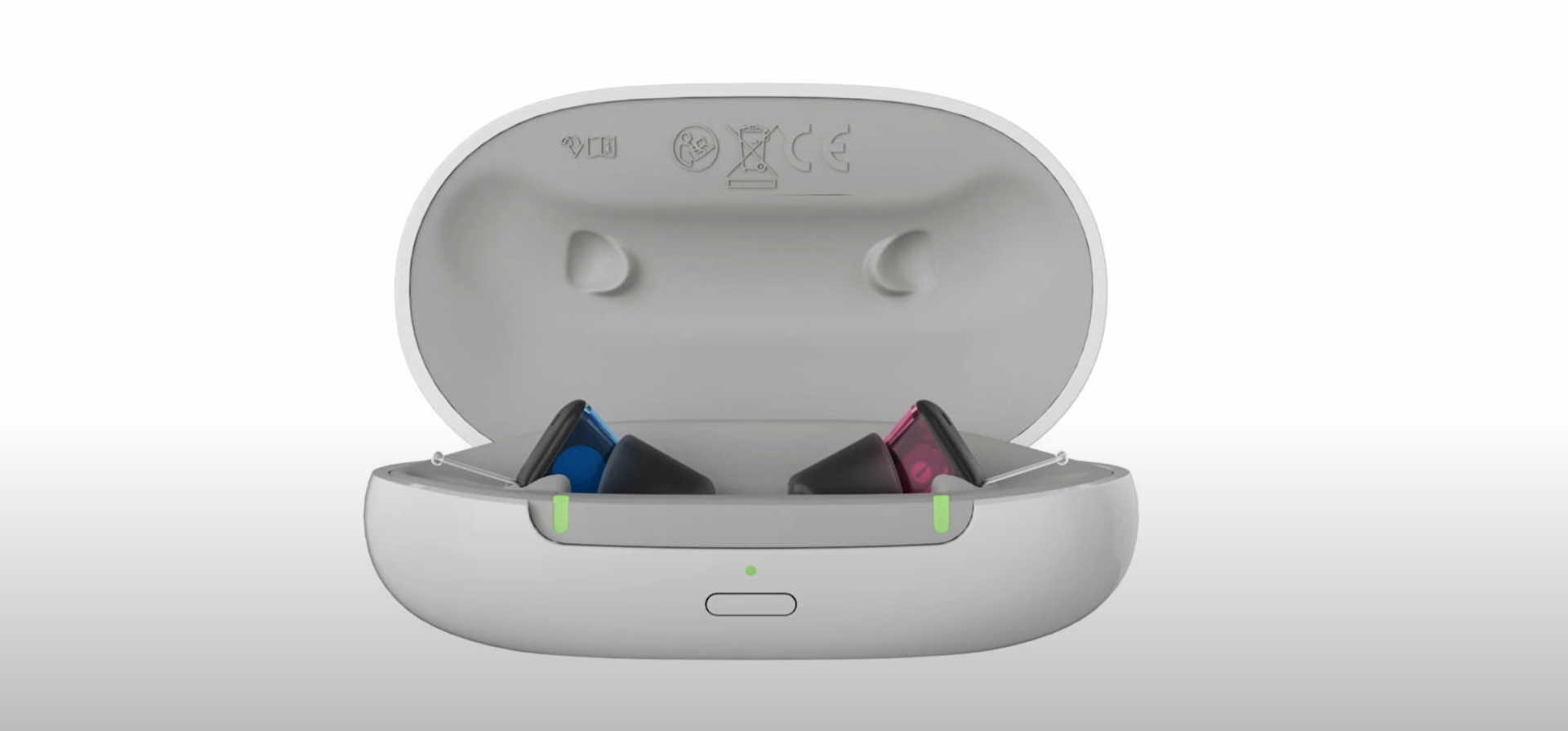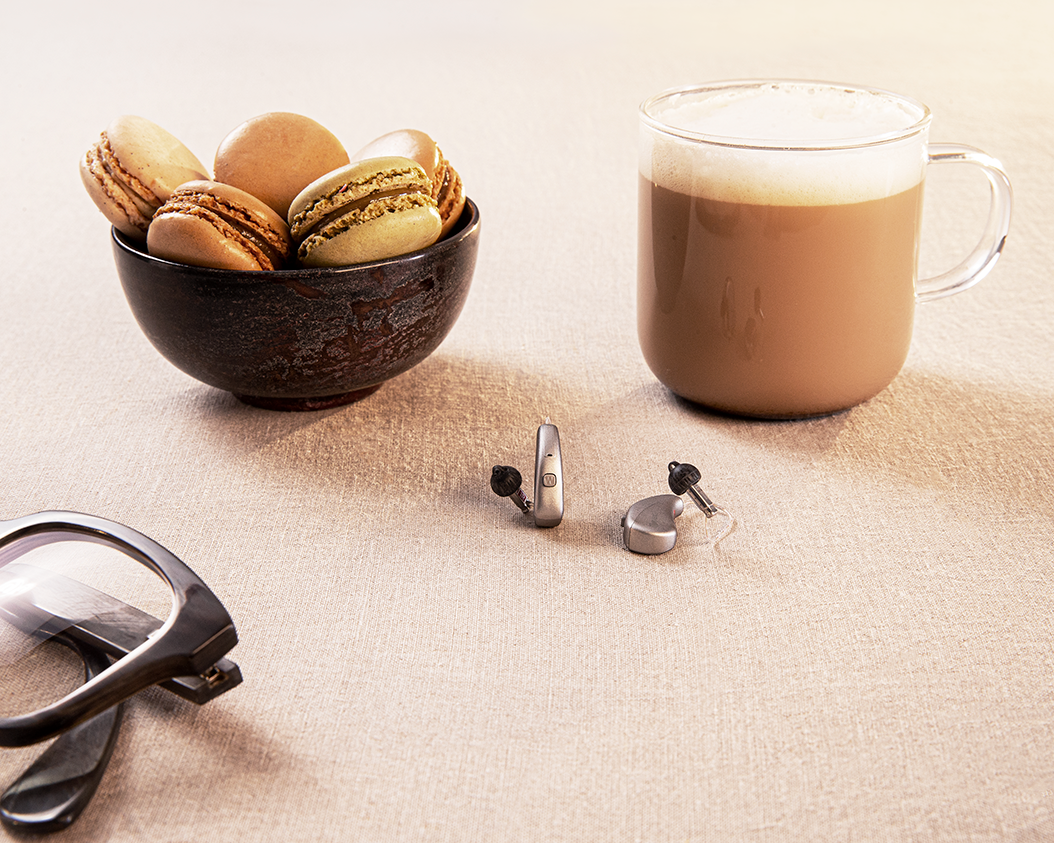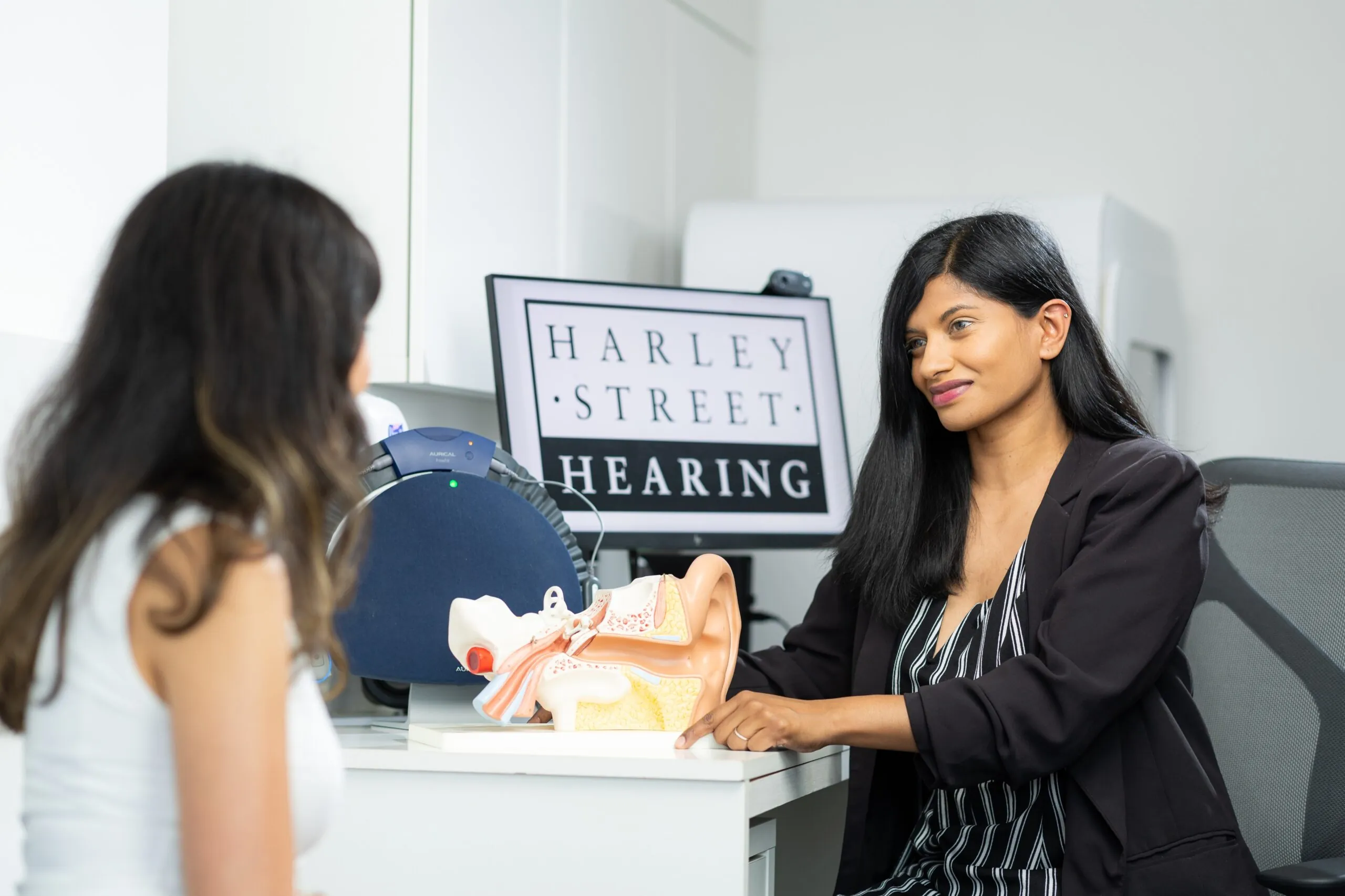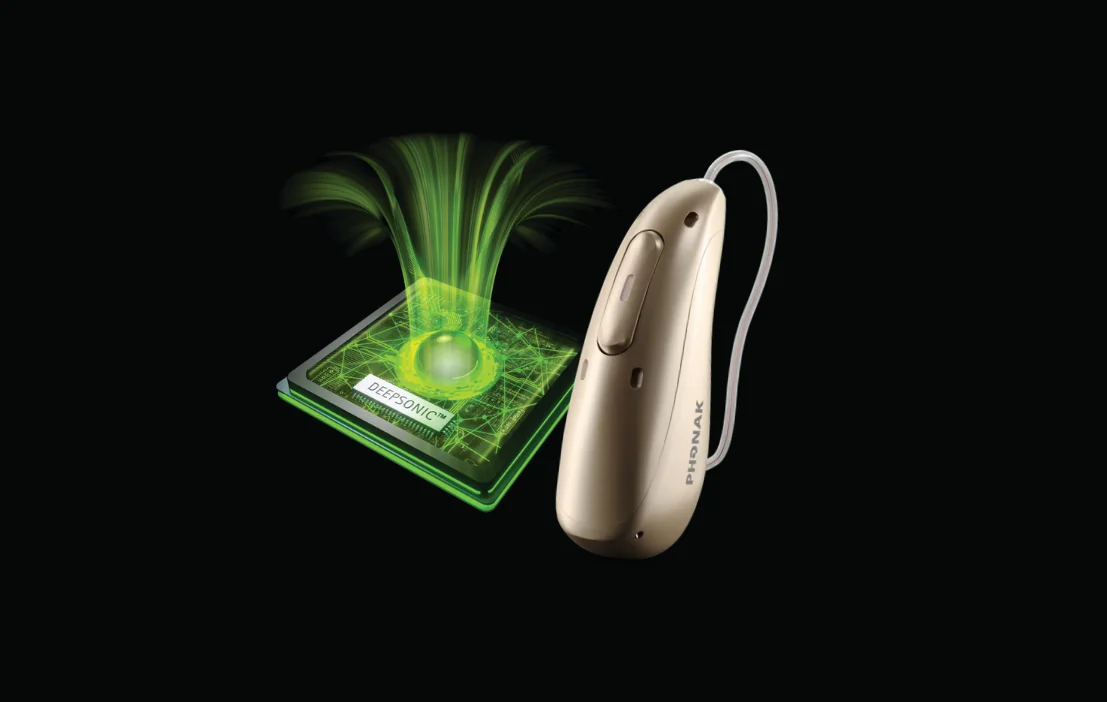This blog post was last updated on 15/01/2025
Looking for the most advanced hearing aid technology for 2025? Well, look no further. Last year saw some incredible advancement in hearing aids, with releases from major manufacturers including cutting-edge, never-seen-before features.
In this blog, we’ll list our top picks from each major hearing aid brand – including Phonak, Oticon, Signia, Starkey, ReSound and Widex, comparing their features and outlining what’s unique for each of them. Hopefully, we’ll be able to guide you in the right direction to find the best hearing aid for you.
Hearing Aid Review Index
We’ll start by comparing them all physically and then throughout this blog, we will compare all of their individual features to help you make an informed decision.
Phonak Infinio
Starting off strong with Phonak’s brand new family of hearing aids, Infinio, released in August 2024.
The Phonak Infinio hearing aid range includes four new models:
Audéo Infinio
This is their rechargeable receiver-in-canal style, designed for versatility and suitable for a range of different hearing losses.
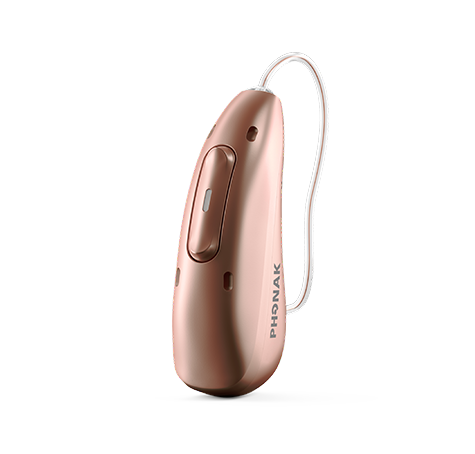
Virto R Infinio
The Virto R Infinio marks Phonak’s debut rechargeable in-the-ear hearing aid. Equipped with directional microphones, these devices stand out as some of the most stylish in-the-ear hearing aids available.
Audéo Infinio CROS
Phonak’s new Audeo Infinio CROS is tailored for individuals with unilateral hearing loss requiring a CROS or BiCROS configuration. This updated system focuses on enhanced battery performance, delivering a 30% improvement and resolving the challenges faced with earlier CROS and BiCROS models.
Audéo Infinio Sphere
The Audéo Infinio Sphere takes hearing aids to an entirely new level, introducing groundbreaking technology to the Infinio lineup. This innovation enhances not only hearing but also speech understanding, particularly in challenging environments with background noise.
The Audéo Infinio Sphere stands out as a groundbreaking innovation in hearing aids, powered by Phonak’s first real-time AI chip for separating speech from noise.
- Advanced AI Technology: Features a deep neural network with 4.5 million neural connections trained on over 22 million sound samples. Achieves up to a 10 dB improvement in signal-to-noise ratio.
- Enhanced Speech Clarity: Offers a 36.8% increase in speech understanding and significantly reduces listening effort in noisy environments.
- User Benefits: Clinical trials show 21% less fatigue and a 45% reduction in listening effort, with even greater enhancements when paired with a Roger On device (up to 61% improved speech understanding).
New Features of Phonak Infinio Hearing Aids
Biometric Calibration
- Custom-built using biometric calibration to minimise sound leakage and enhance quality.
- Advanced imaging maps the ear, predicting sound behaviour for personalised hearing aid designs based on outer ear shape.
ERA Chip
- APD 3.0: New audiological fitting model providing precise sound compensation per frequency for natural sound.
- 93% of users in research trials preferred it over competitors.
AutoSense 6.0:
- Real-time environmental analysis for dynamic sound adjustments.
- Improves speech understanding by 16% and reduces listening effort by up to 45%.
- Delivers sharper, clearer, and more natural sound, especially in noisy settings.
Phonak Auracast Bluetooth Updates
- Universal Compatibility: Connects with all Bluetooth-enabled devices, supports dual streaming.
- Hands-Free Calling: Low latency and instant connectivity for seamless use.
- Improved Transmission Power: Six times stronger than previous models for stable, long-range connections.
- Auracast-Ready: Future-ready for LE audio with public venue transmitters, enabling direct hearing aid connectivity to stadiums, train stations, and more (activation pending future firmware update).
Build Quality Updates
- Enhanced robustness with water protection, microphone shielding, and Parylene coating.
- Rigorous lab testing ensures durability, rivaling Starkey Genesis AI.
Oticon Intent
Oticon built on its previous hearing aid technology, Oticon Intent with the Intent miniRITE R Receiver In Canal hearing aid.
Design
The Oticon Intent addresses key user priorities, such as improved hearing in noise and enhanced speech clarity, with a design tailored to modern needs.
Slightly shorter than previous models, the Intent is Oticon’s most discreet Bluetooth receiver-in-canal hearing aid yet. However, it’s marginally bulkier, which might raise concerns about comfort for those who wear glasses.
In terms of usability, Oticon has swapped out the rocker switch from the Oticon Real for a streamlined single button on the back of the device, offering a simpler control interface.
There are nine colours including a new sky blue. You’ll notice that they’re all matted nowadays, so they don’t tend to catch the light. The most popular colour that Harley Street Hearing patients tend to choose is chroma beige.
New features
Oticon Intent’s latest update includes various new features, such as:
- Sirius Chip
- Powers advanced speech clarity improvements in noisy environments with three core features.
- Artificial Intelligence
- Enhanced deep neural network trains the hearing aids to prioritize speech sounds in diverse listening environments.
- Improved Noise Reduction
- Noise management features simplify following conversations in challenging environments like restaurants or crowds.
- Constant scanning delivers key sounds while reducing less relevant noise.
- 4D Sensor Technology
- Motion sensors track conversational activity, head and body movement, and surroundings.
- Adapts to changing needs, boosting speech comprehension by 15%.
- Customizes sound response for specific scenarios, such as waitstaff, greeters, or groups in noisy venues.
- LE Audio Connectivity
- Future-ready broadcast audio enables seamless connections to public venues with better sound quality and reduced battery usage.
- Ideal for concert halls, conferences, train stations, and lectures.
- Telecoil Integration
- Built-in telecoil offers compatibility with existing loop systems in venues like theatres, churches, and other public spaces until LE Audio becomes widespread.
- Rechargeability Updates
- Faster Charging with a full charge reduced to 2 hours (previously 3 hours).
- There are also quick-charge options of 15 minutes (4 hours usage) and 30 minutes (8 hours usage).
- The new Oticon Intent battery is designed to last 4-5 years.
Starkey Edge AI
Starkey’s Edge AI family includes seven distinct models, catering to a wide range of hearing needs and preferences.
These include:
- Completely-in-Canal (CIC) model
- In-the-Canal (ITC) or half-shell rechargeable model
- In-the-Ear (ITE) rechargeable model
- Receiver-in-Canal (RIC) disposable battery model
- Micro Receiver-in-Canal (M-RIC) disposable battery model
- RIC Rechargeable with Telecoil model
- CROS System
Although these models may resemble the previous Genesis AI family, Starkey emphasises that the true innovations are driven by their latest technological advancements.
Starkey’s G2 Neuroprocessor
Starkey’s G2 Neuroprocessor represents a major leap in hearing aid technology, standing as the seventh generation of their AI-driven advancements. The innovation at the heart of this processor is the integration of a neural processing unit (NPU), designed to process sound in a way that closely mirrors the human brain’s natural processing abilities.
This allows the hearing aids to handle complex listening environments with greater speed and precision. The G2 processor is 100 times more powerful than its predecessors and has been trained using millions of sound environments, ensuring an unprecedented level of real-time adaptation. Starkey claims that the processor continuously monitors your surroundings 60 times per second, automatically adjusting settings to deliver a highly personalised listening experience, regardless of the environment.
Improved speech detection and noise reduction
One of the standout features of Starkey’s Edge AI hearing aids is the remarkable improvement in speech detection and noise reduction. The G2 processor enhances speech accuracy by 30% over previous models, making it significantly more effective at picking out speech in noisy settings. But perhaps the most impressive claim is the 13 dB improvement in the signal-to-noise ratio, a figure that represents one of the largest advancements in the hearing aid industry.
This improvement enables users to hear more clearly, even in environments with substantial background noise. Starkey’s commitment to real-world performance shines through, with this upgrade offering tangible benefits to users seeking better clarity and less distortion in everyday listening situations.
Key features in the Edge AI family
Starkey has developed several features within the Edge AI hearing aids to ensure an enhanced listening experience, focusing not only on speech detection but also on improving overall daily comfort. The first is transient noise reduction, designed to quickly compress sharp, sudden sounds like a door slamming or dishes being washed. This system adjusts its level of reduction based on the surrounding noise environment, offering more compression in quieter settings and less in noisier ones.
Another feature is binaural wind noise management, which helps reduce disruptive wind noise by up to 35 dB, making outdoor activities much more enjoyable for users who wear hearing aids in windy conditions. Lastly, Starkey’s binaural machine noise reduction targets and reduces the sound of machines, such as road noise, vacuum cleaners, or hair dryers, by up to 22 dB. This feature ensures that such background noise doesn’t overwhelm the user, allowing for a more comfortable and focused listening experience in everyday situations.
They also come with what Starkey claims to be a record-breaking 51 hours of battery life on a single charge, even with significant streaming usage.
Signia IX
Signia’s exciting new range of hearing aids include the Pure Charge&Go IX, the Pure Charge&Go T IX, the Pure Charge&Go CROS, and the Silk Charge&Go IX, with the Silk Charge&Go IX CROS being the world’s first rechargeable CIC hearing aids.
These innovations offer a blend of advanced features designed to improve hearing in noisy environments and enhance user comfort. In this breakdown, we’ll dive into what makes these models unique, their key features, and the significant improvements over previous hearing aid technology.
New Technology: The IX Chip
Signia’s new devices run on the Integrated Xperience (IX) platform, providing cutting-edge features that are set to change the way hearing aids perform in challenging listening environments.
One of the major advancements in these new hearing aids is the integration of Signia’s new IX chip. The chip processes 192,000 data points per second to assess the environment and adjust the hearing aid’s settings for optimal listening. This fast processing allows for the next level of directional beamforming, which directs microphones toward the sounds that matter most, such as a conversation partner while minimising background noise.
While beamforming technology isn’t new, Signia has taken it further with real-time conversation enhancement. This feature not only focuses the microphones forward, but it also tracks and adapts to moving speakers. In noisy environments, the hearing aids can pinpoint multiple conversations and adjust the microphone positioning up to 1,000 times per second, making it easier for wearers to follow conversations, even in difficult settings. According to Signia, 95% of users showed improved performance with this feature enabled.
Pure Charge&Go IX and Pure Charge&Go T IX Features
Among the new models, the Pure Charge&Go IX and Pure Charge&Go T IX are both receiver-in-canal (RIC) styles that cater to varying degrees of hearing loss, from mild to profound.
These hearing aids feature Bluetooth connectivity, allowing for direct streaming from iPhones and Android smartphones. The Pure Charge&Go IX provides 24 hours of battery life per charge, while the Pure Charge&Go T IX lasts an impressive 34 hours on a single charge. Only the T IX model is equipped with a telecoil, enabling connection to loop systems in public venues, which is ideal for settings like theatres and churches.
Both models are also compatible with CROS systems, making them suitable for those with hearing loss in one ear and normal hearing or hearing loss in the other.
Silk Charge&Go IX: The First Rechargeable CIC Hearing Aid
The Silk Charge&Go IX is a groundbreaking model as the world’s first rechargeable completely-in-canal (CIC) hearing aid.
Unlike traditional CIC hearing aids, the Silk models are ready-to-wear devices that do not require a custom ear impression. They come with interchangeable domes for different ear sizes.
One charge provides 24 hours of battery life, and the included case can hold three days’ worth of power for charging on the go. This model also offers excellent discretion, though it lacks Bluetooth capabilities, meaning it’s not suited for those who wish to stream media or phone calls directly to their hearing aids.
Silk Charge&Go IX CROS
The Silk Charge&Go IX CROS model is designed for individuals with unaidable hearing loss in one ear. It works by using a transmitter to detect sounds on the unaidable side and wirelessly transmits them to the better-hearing ear.
This technology offers a 360° sound experience, which can be particularly useful in scenarios like riding in the passenger seat of a car. For the first time, the Silk models offer a rechargeable CROS system, which is a huge step forward for those with single-sided deafness.
ReSound Nexia
ReSound has upgraded their entire hearing aid portfolio to the latest Nexia platform, which brings some significant improvements to their devices.
Nexia is designed to enhance hearing aid performance, particularly in challenging listening environments like background noise. The new platform promises better speech understanding, more balanced sound, and the integration of new technologies, setting it apart from previous hearing aid offerings.
Key Features of Nexia Hearing Aids
1. Improved Speech Understanding in Background Noise
ReSound claims that the Nexia hearing aids offer the best-ever speech understanding in background noise. This achievement is thanks to the combination of several advanced technologies, including:
- Full Microphone: Provides comprehensive sound capture from all directions.
- Binaural Beamforming: Allows for focused listening by directing microphones toward the sound source you want to hear.
- Omnidirectional Listening: Captures environmental sounds and balances them with speech for a more natural listening experience.
With these technologies combined, Nexia hearing aids provide a clearer and more balanced hearing experience, especially in noisy environments. Feedback from users who’ve tried these devices has been positive, making them an excellent option for anyone struggling with background noise. If this is a concern for you, consulting your audiologist about Nexia could be worth considering.
2. LE Audio and Auracast Connectivity
The second major feature of the Nexia hearing aids is the inclusion of LE Audio, also known as Auracast. This new form of audio connectivity allows hearing aids to directly connect to audio streams from public venues. Imagine walking into a football stadium, a train station, or a church, and hearing the commentary, announcements, or speech clearly through your hearing aids.
This new technology has the potential to replace traditional loop systems in public venues, allowing hearing aid users (and even headphone users) to connect to audio sources more seamlessly. It promises:
- Improved sound quality: With clearer audio transmission and less interference.
- Lower battery consumption: Enhanced efficiency means your hearing aids will last longer while connected.
- No pairing process: Users simply enter a venue, select a setting on their hearing aids, and connect to the audio being streamed, making it incredibly user-friendly.
At present, LE Audio is only useful if public venues have installed the necessary transmitters. These transmitters are costly, and it requires widespread adoption to make the technology viable. However, it is expected that over time, this technology will replace outdated loop systems and become more common. The potential for future implementation is huge, and as this rollout progresses, it could significantly enhance the hearing aid user experience.
Widex Moment
Widex’s new Moment Sheer hearing aid is a subtle evolution within the Widex Moment family, rather than an entirely new product.
1. Moment sRIC – New Receiver-in-Canal Hearing Aid
One of the key updates in the Widex Sheer launch is the Moment sRIC (receiver-in-canal). This hearing aid is set to replace the Widex mRIC, which has been in use for the past two years. While the internal technology remains the same, featuring:
- Rechargeability
- PureSound technology for clear sound
- Direct streaming from both iOS and Android devices
- Integrated AI for personalised sound adjustments
The main changes are physical. The sRIC features a redesigned casing, with particular emphasis on the microphone ports. Widex claims this design change creates a unique sound profile, with an added cushion beneath the microphone grid. However, they haven’t detailed exactly how this change impacts the overall sound quality, so it remains an area of curiosity for users and professionals alike.
2. New sRIC Charger
Alongside the Moment sRIC hearing aid, Widex has introduced a new charger for these devices. The improvements include:
- Removal of the lid, which simplifies the charging process.
- Stainless steel trim and a heavier weight, giving the charger a more premium, solid feel compared to the previous model.
These enhancements contribute to a more satisfying user experience when handling and charging the hearing aids.
3. My Sound 2.0 App Update
Widex has integrated artificial intelligence into its hearing aids for several generations, and now with My Sound 2.0, the app has received an update. The updated version offers:
- A/B comparison of settings: Users can choose between two preset settings to determine which one is most suitable for a given environment.
- More dynamic adjustments: The new version adds compression preferences, allowing for more fine-tuned sound adjustments based on user preferences. This results in over 10 times more comparisons than the previous version of My Sound, helping the hearing aids learn and adjust automatically to future situations.
4. Redesigned TV Play Streamer
The Widex TV Play streamer, which connects the TV to the hearing aids, has also been redesigned. While there are no major improvements in sound quality, the updated design makes the streamer easier to use and more streamlined in appearance.
5. New Ear Tips for Better Fit and Feedback Control
Widex has released three new styles of ear tips for improved comfort and sound quality:
- Open round dome
- Sleeve power
- Sleeve vented
Historically, I’ve found that Widex hearing aids tend to have higher levels of feedback compared to other brands, limiting the patient population I could fit with them. These new tips, with varying levels of venting, are designed to create different levels of seal, which could potentially help with controlling feedback. This innovation is especially exciting because it expands the possibilities for fitting Widex hearing aids to more individuals.
6. SoundRelax Feature
Widex has introduced a new feature called SoundRelax, which builds upon their existing Zen tones for tinnitus management. These are fractal tones, a unique form of tinnitus sound enrichment therapy developed by Widex. With SoundRelax, Widex aims to broaden the use of these relaxing sounds:
- Relaxing tones and nature sounds: The new tones are softer than the previous Zen tones, and the synchronization between the ears is improved.
- While the Zen tones were mainly for tinnitus sufferers, the SoundRelax feature is intended to provide a calming experience for all Widex hearing aid users, promoting peace and relaxation.
Choosing the right hearing aid for you
The world of hearing aids is a difficult one to navigate, and there’s no one-size-fits-all solution. Everyone has different hearing needs and challenges, so it’s important that your audiologist chooses the right technology for you and adjusts it accordingly.
If you’re looking for personalised advice on your perfect hearing technology, contact Harley Street Hearing. Our team of highly skilled clinical audiologists can recommend the most suitable device for your needs.
The best hearing aids for 2025
Matthew Allsop is a Partner at Harley Street Hearing, and a content creator for Hearing Tracker, where he shares his honest opinion on all new hearing aid technology. Hearing Tracker is the world’s first truly independent resource for hearing aid customers. You can view his video where he shares his opinions on the latest hearing aids for 2025 below.
Enjoy this article? You might be interested in some of our others:

